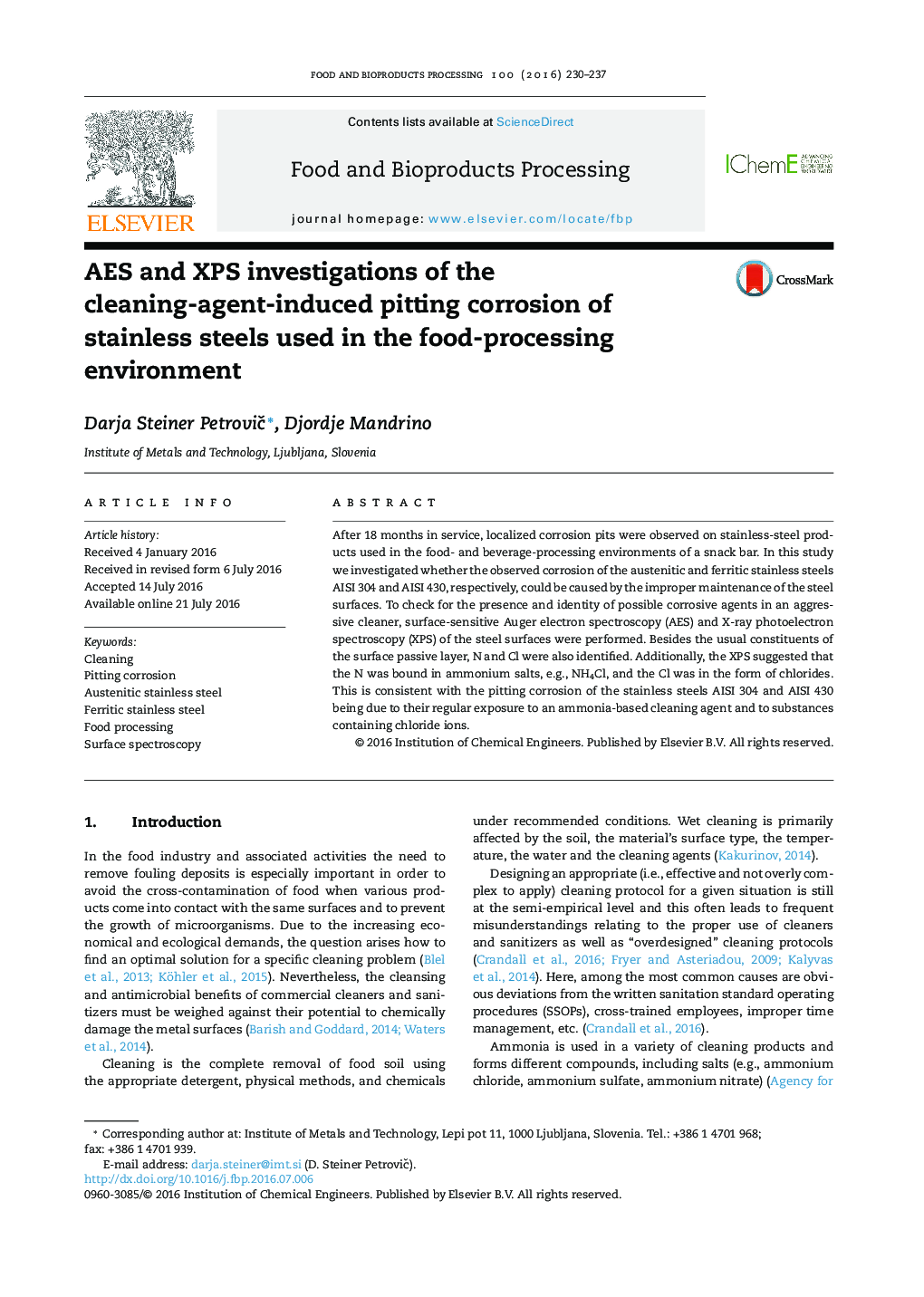| Article ID | Journal | Published Year | Pages | File Type |
|---|---|---|---|---|
| 6451731 | Food and Bioproducts Processing | 2016 | 8 Pages |
â¢Pitting corrosion was observed on stainless steels AISI 304 and AISI 430.â¢AES and XPS showed presence of N and Cl on steels' surfaces.â¢N 1s and Cl 2p binding energies correspond to NH4Cl.â¢Ammonia from the cleaning agent reacts with chlorine from the environment.â¢Appropriate cleaning protocol design is of crucial importance.
After 18 months in service, localized corrosion pits were observed on stainless-steel products used in the food- and beverage-processing environments of a snack bar. In this study we investigated whether the observed corrosion of the austenitic and ferritic stainless steels AISI 304 and AISI 430, respectively, could be caused by the improper maintenance of the steel surfaces. To check for the presence and identity of possible corrosive agents in an aggressive cleaner, surface-sensitive Auger electron spectroscopy (AES) and X-ray photoelectron spectroscopy (XPS) of the steel surfaces were performed. Besides the usual constituents of the surface passive layer, N and Cl were also identified. Additionally, the XPS suggested that the N was bound in ammonium salts, e.g., NH4Cl, and the Cl was in the form of chlorides. This is consistent with the pitting corrosion of the stainless steels AISI 304 and AISI 430 being due to their regular exposure to an ammonia-based cleaning agent and to substances containing chloride ions.
Graphical abstractDownload high-res image (246KB)Download full-size image
